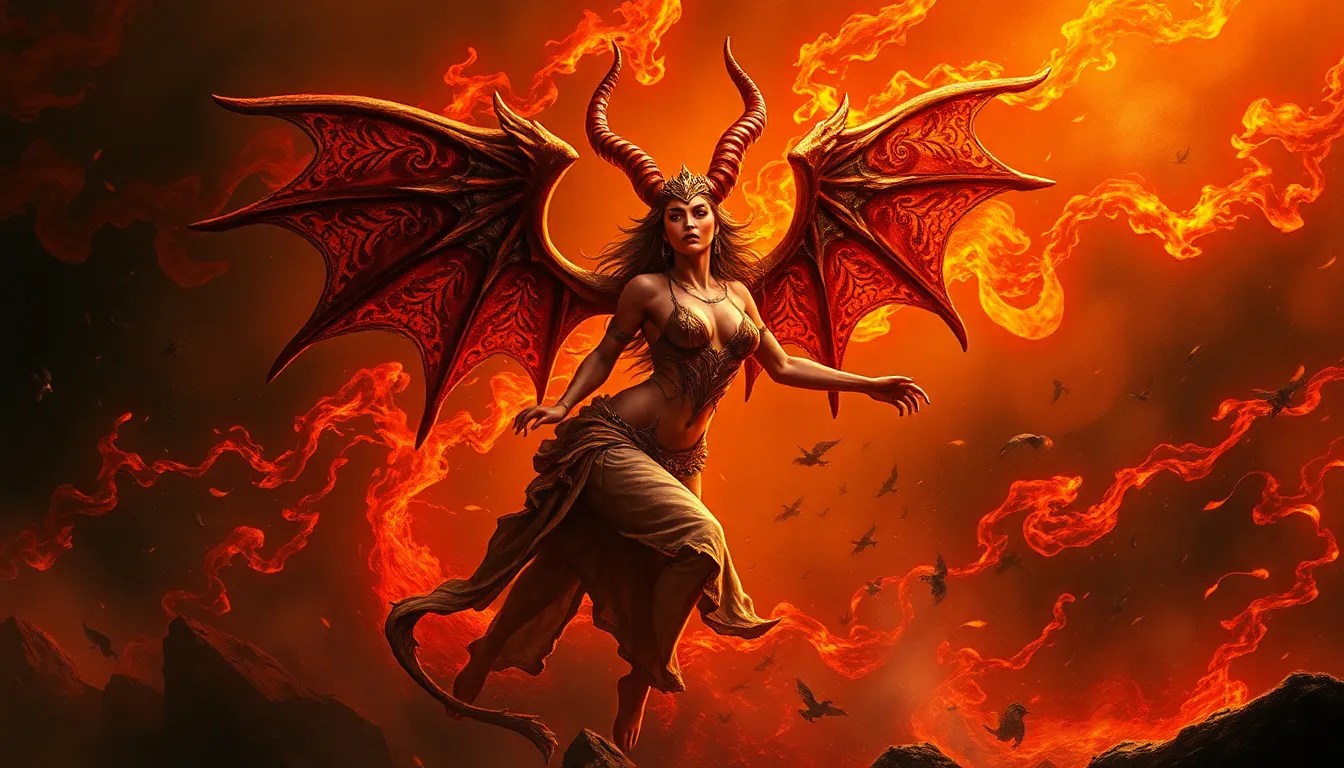The Babylonian Demoness: Myths and Misconceptions
I. Introduction
Babylonian mythology, rich with intricate stories and divine figures, offers a fascinating glimpse into the beliefs of one of the world’s oldest civilizations. This ancient lore is not only a reflection of the spiritual life of the Babylonians but also provides insight into their societal norms and values.
Among the various entities in Babylonian mythology, demonesses play a unique and often misunderstood role. These female figures are frequently depicted as malevolent beings, yet their stories encompass a range of attributes and meanings.
The purpose of this article is to explore the myths surrounding Babylonian demonesses, clarify common misconceptions, and shed light on their significance within the broader context of Mesopotamian mythology.
II. Origins of the Babylonian Demoness
The concept of demonesses in Mesopotamian beliefs can be traced back to the earliest civilizations in the region, where mythology was deeply intertwined with daily life.
Key figures such as Lilith, often considered the most prominent demoness, embody the complexities and dualities of female power and danger in Babylonian thought. Other notable demonesses include:
- Lamastu: Known for her role as a child-stealing demoness.
- Gula: A goddess associated with healing who also had darker aspects.
- Inanna: Although primarily a goddess, she exhibits traits that align with demonesses in certain myths.
The role of women in these myths often reflects the societal views of women in Babylonian culture, where they were seen as both powerful and perilous, capable of great nurturing and great harm.
III. Characteristics and Attributes
Babylonian demonesses are characterized by a range of attributes that reflect their complex nature. Common traits include:
- Ambiguity: They often embody both benevolent and malevolent aspects.
- Power: Many demonesses possess supernatural abilities that can influence the mortal realm.
- Feminine Mystique: Their allure often captivates both mortals and gods.
The symbolism associated with these demonesses is diverse, representing themes such as fertility, sexuality, danger, and the unknown. This duality in their nature illustrates the complexities of femininity as perceived by ancient societies.
IV. Major Myths Involving Demonesses
One of the most enduring stories in Babylonian mythology is that of Lilith. Her origins are shrouded in mystery, with interpretations varying widely across different texts and cultures. In some accounts, she is depicted as Adam’s first wife, who was cast out for refusing to submit to him, evolving into a symbol of female independence and rebellion.
Other prominent demonesses and their narratives include:
- Lamastu: A demoness feared for her malevolent actions against pregnant women and infants.
- Ishtar: While primarily a goddess, Ishtar’s stories often reveal her darker, vengeful side, aligning her with demoness-like characteristics.
These myths significantly impacted Babylonian culture and religion, shaping rituals and societal attitudes towards women and the supernatural.
V. Misconceptions Surrounding Babylonian Demonesses
Despite their rich narratives, Babylonian demonesses are often subject to common stereotypes. Many misconceptions arise from the tendency to oversimplify their roles as purely evil figures.
Some of the key misconceptions include:
- Demonesses are solely malevolent: This overlooks their protective and nurturing aspects.
- They represent only chaos and destruction: Many demonesses also symbolize fertility and life.
- Influence of later cultures: The portrayal of demonesses in Judeo-Christian texts has distorted their original meanings in Babylonian culture.
Understanding these misconceptions is crucial for a more nuanced appreciation of their roles in mythology.
VI. The Role of Demonesses in Ancient Society
In ancient Babylon, mythology was not merely a collection of stories; it intersected deeply with daily life. The presence of demonesses in these tales often reflected the fears, hopes, and societal norms of the time.
Rituals and practices associated with demonesses included:
- Protective amulets against Lamastu.
- Rituals to honor Ishtar, seeking her favor in love and war.
- Ceremonies to appease female spirits believed to influence childbirth.
The perception of demonesses varied between men and women, with some viewing them as threats while others revered them as powerful figures embodying the complexities of femininity.
VII. Legacy of Babylonian Demonesses in Modern Culture
The legacy of Babylonian demonesses continues to resonate in contemporary literature and media. Their stories have inspired modern interpretations that often blend ancient narratives with contemporary themes of empowerment and rebellion.
The revival of interest in Mesopotamian mythology has led to:
- Books and novels exploring their tales from feminist perspectives.
- Films and television series that incorporate ancient narratives into modern storytelling.
- Art and music that draw inspiration from their complex symbolism.
These modern interpretations often differ from ancient beliefs, emphasizing empowerment rather than fear.
VIII. Conclusion
In summary, the exploration of Babylonian demonesses reveals a rich tapestry of myths that challenge simplistic interpretations. These figures, often misunderstood, embody a range of attributes that reflect the complexities of femininity in ancient societies.
Understanding Babylonian demonesses in their historical context is crucial for appreciating their significance within mythology. The stories of these demonesses invite further exploration and a deeper understanding of Mesopotamian culture and its enduring legacy.



